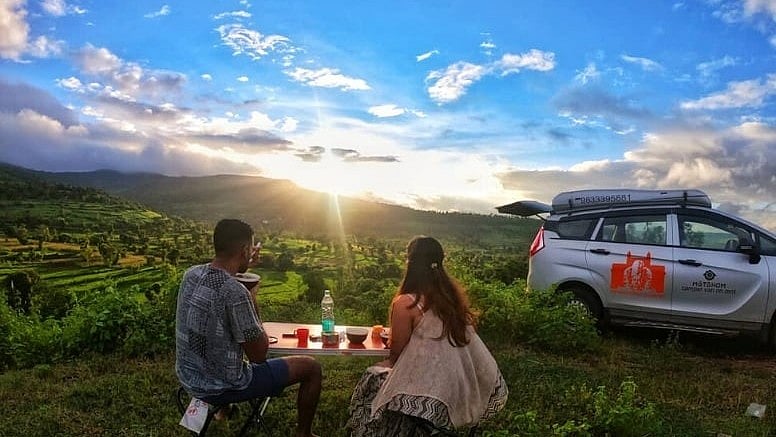India draws fewer ASEAN tourists despite booming Indian travel to Southeast Asia | Representative Image
Southeast Asia is looking to India for a tourism reboot. The pitch is working, going by the rising number of Indian tourists flocking to Southeast Asia’s cities, beaches, mountains and places of pleasure. But how reciprocal is the love? Are travellers from Southeast Asia equally smitten by India?
The ASEAN portal says 4,291,507 Indians travelled to ASEAN countries in 2023. Till the 3rd quarter of 2024, the number was 4,273,181. In contrast, India received 754,230 visitors from ASEAN in 2023. The corresponding figure from January to October 2024 was 662,605.
ASEAN (Association of Southeast Asian Nations: Brunei, Cambodia, Indonesia, Laos, Malaysia, Myanmar, the Philippines, Singapore, Thailand and Vietnam) has a combined population of over 677 million and a combined Gross Domestic Product (GDP) of $3.8 trillion. In a recent meeting of ASEAN tourism ministers held in Johor, Malaysia, alongside the 12th Meeting of ASEAN-India Tourism Ministers (M-ATM Plus India), there was much talk about the growing importance of the ASEAN-India tourism partnership. Delegates spoke about the need to foster mutual understanding, enhance connectivity, and promote people-to-people exchanges.
But the numbers show the imbalance. The question is: why?
There are many reasons why more Indians are flocking to Southeast Asia. On a recent trip to Ho Chi Minh City, I found nearly a dozen Indian restaurants on just one street—Bui Vien, the backpackers’ favourite area in Vietnam’s bustling commercial capital. An Indian waiter confirmed that the number of Indians visiting the city for pleasure and work is going up all the time. According to Vietnam’s National Tourism Authority, over 500,000 Indians visited the country last year, up from 138,000 in 2022. Vietnamese media and travel blogs are full of reports on how upwardly mobile Indian travellers are emerging as “potential gold mines” for Vietnam’s tourism industry.
Then there is the perennial favourite: Thailand. A record 2.1 million Indians visited Thailand in 2024, almost 30% more than in 2023. Relaxed visa regimes, better air connectivity, value for money, and affordable luxuries are some of the key drivers powering the surge in Indian tourists flocking to Thailand, Vietnam, Malaysia, and other countries in the region.
India offers fascinatingly varied cuisines, cultures, museums, monuments, and landforms. So why is India not yet the hot destination it deserves to be, despite several initiatives to draw tourists to India, including from Southeast Asia?
As someone who spends part of the year in Southeast Asia, I find two words—safety and sanitation—encapsulate a big part of the problem.
India offers stunning beauty, but most tourists prefer scenic splendour backed with sanitation.
“If you want tourism, you have to have clean public toilets,” Lee Kuan Yew, Singapore’s founding father and first prime minister, famously said. India built 110 million toilets in over 4,000 cities and towns as part of its Swachh Bharat campaign, perhaps the largest toilet building programme ever. But clean, well-maintained public toilets, accessible to all, are still in the realm of fantasy in India.
Nor has the campaign resulted in better waste management. Even posh enclaves and markets in much of urban India are choked with litter. This is not the norm in Southeast Asian countries.
That is why some Asian streets are more attractive than others. Street food and street life are great attractions only when backed by safety and hygiene. Locals and tourists gorge on street food in Bangkok. But in a hot and humid city, that success hinges on food vendors scrupulously sticking to hygiene standards. There are strict norms and strict penalties for violators.
As a woman traveller, I also feel compelled to flag the sense of safety that most Southeast Asian cities offer irrespective of one’s age, ethnicity, religion, or how one is dressed. I have walked home from the neighbourhood SkyTrain station in Bangkok late at night without anyone following me. The same when I walked alone from my hotel to a local convenience store at 2 am in George Town, Penang, Malaysia.
This is where many parts of India lose out. Blog posts in Southeast Asia repeatedly flag the many risks of travelling in India, especially for female travellers. Here’s an example: “India is perceived as a risky travel destination for female foreign tourists because of crime against women,” say Dang Thuan A. Nguyen and Liwei Hsu in a September 2022 paper in the Journal of Destination Marketing & Management. ASEAN media has carried reports of gruesome rapes and murders in India.
At the same time, India is perceived as a socially conservative country with norms that put off many young travellers who like to dress, eat and be affectionate towards each other in public as they please.
Tourists are not pilgrims. Most are happy to adapt to local culture but only up to a point. They do not wish to change personalities. They also need to feel safe while enjoying themselves.
And it is tough to create a country within a country just for tourists. If locals do not feel safe in a city, neither will the tourists. If locals have to cope with dirt, broken infrastructure, and molesters on Indian streets, so do the tourists. But the latter will walk away or not drop by.
Patralekha Chatterjee is a writer and columnist who spends her time in South and Southeast Asia, and looks at modern-day connects between the two adjacent regions. X: @Patralekha2011
